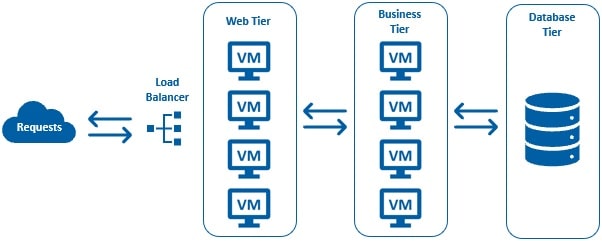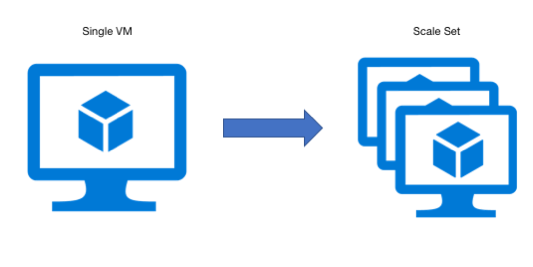Hello! Here is some background information on it, as well as instructions on how to create virtual machine scale sets and scale sets with Python SDK. I’ve included the links further down the page.
What is a Virtual Machine Scale Set (VMSS)?
We may construct and manage several virtual machines using a virtual machine scale set.
In order to provide a large-scale service including big data or big computing, Microsoft Azure Virtual Machine scale sets service allows us to create up to 1000 identical virtual machines operating together.
Why would anyone use a virtual machine scale set?
Because your applications are spread across multiple instances, you should use it to provide redundancy and boost speed. Users’ requests are distributed to one of the application instances using a load balancer set-up.
The users of your application can therefore be redirected to the other instance of your application whenever an update or maintenance is required. You may be required to increase the number of application instances running your application in order to handle the high volume of requests.
Let’s use an easy example to understand this. Think of a standard three-tier application.

Various web servers in the web tier and multiple application servers in the business tier are really common. In this example, the web tier includes four web servers, while the business layer contains four application servers. However, in the actual world, you may have a large number of web servers and application servers in each of the tiers, depending on the traffic and demand for your application.
Take GMAIL.com as an example. Over a billion people utilize it globally.
It wouldn’t be shocking if they had thousands of web servers and business servers to handle and process all these users’ requests.
Advantages of Virtual Machine Scale Sets:
Azure Virtual Machine Scale Sets offer automated resource scaling, load balancing of traffic, and management services for applications that operate across several VMs. Key advantages of scale sets include the following:
- Multiple VMs are simple to create and maintain.
- High availability and application flexibility are provided.
- Provides your application with the ability to grow automatically as resource demand improves.
- Works at large-scale
The same base OS image and parameters are used to build each Virtual Machine instance. As a result, managing any quantity of virtual machines is simple and requires no additional network administration or configuration effort.
Azure Load Balancer for simple layer-4 traffic distribution and Azure Application Gateway for more sophisticated layer-7 traffic distribution and SSL termination are both supported by scale sets.
You may use availability zones to automatically deploy VM instances in a scale set either in a single data centre or across many data centres to increase the availability of your virtual machines.
Up to 1000 VM instances can be supported using scale settings. The cap is 600 VM instances if you produce and submit your own unique custom VM images.
Differences between Single VM and Scale set:

| Single Virtual Machine | Virtual Machine Scale Set |
|---|---|
| The VMs need to be manually created and configured. | Automatic creation based on the primary configuration |
| Load balancing and application gateway creation and configuration must be done manually. | Application Gateway and Load Balancer setup and integration are both automated. |
| You must manually build an availability set or zones. | Automatic creation of zones or availability settings |
| The VMs must be manually watched over. | Based on scheduling, application insights, host metrics, and in-guest analytics. |